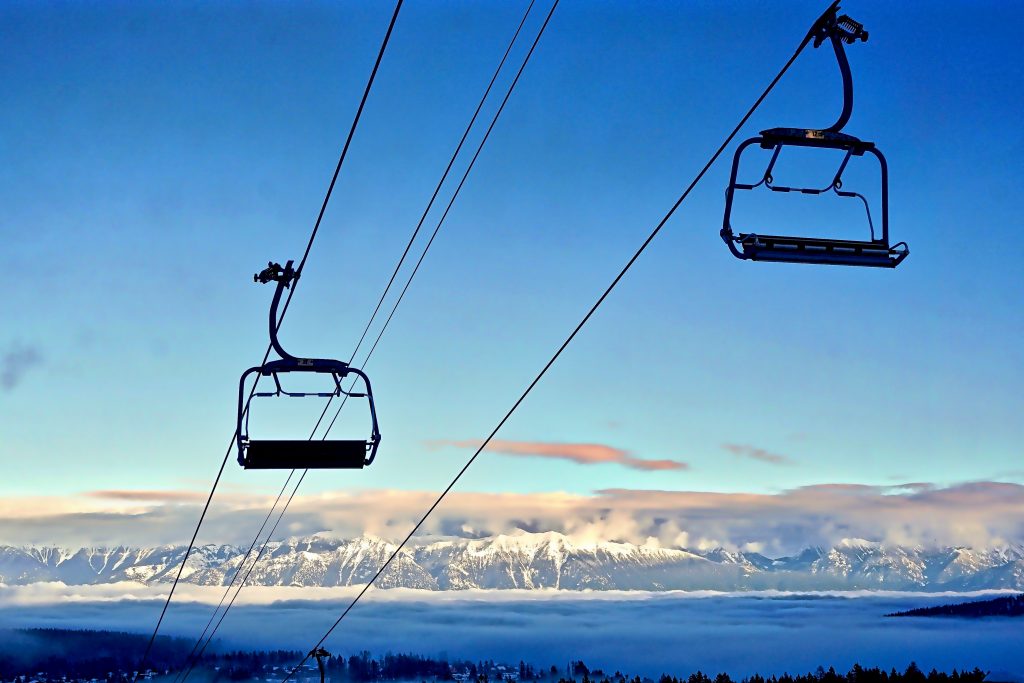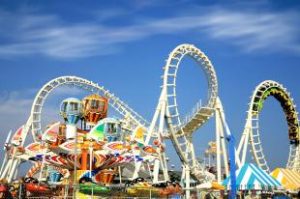This lesson focuses on unique challenges in transportation engineering, such as devising a method for skiers or hikers to get to the top of a mountain. Students work in teams to design a “chair lift” out of everyday items that can transport a ping pong ball in a chair of their own design from the bottom of a “valley” to the top of a “mountain” along a clothes line or wire without the ball falling out.
- Learn about engineering design and redesign.
- Learn how engineering can help solve society’s challenges.
- Learn about teamwork and problem solving.
Age Levels: 8-18
Lesson Plan Presentation
Materials & Preparation
Build Materials (For each team)
Required Materials
- Ping pong ball or super ball
Optional Materials (Trading/Table of Possibilities)
- String or yarn
- Pipe cleaners or bendable floral wire
- Straws
- Paper towel tubes
- Paper clips
- Pulley or thread spool to make pulley
- Balloons
- Foil, plastic wrap
Testing Materials
- Student desks, small tables or chairs
- Duct tape or other strong tape
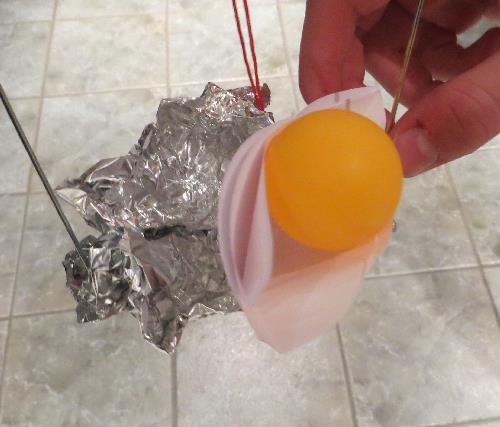
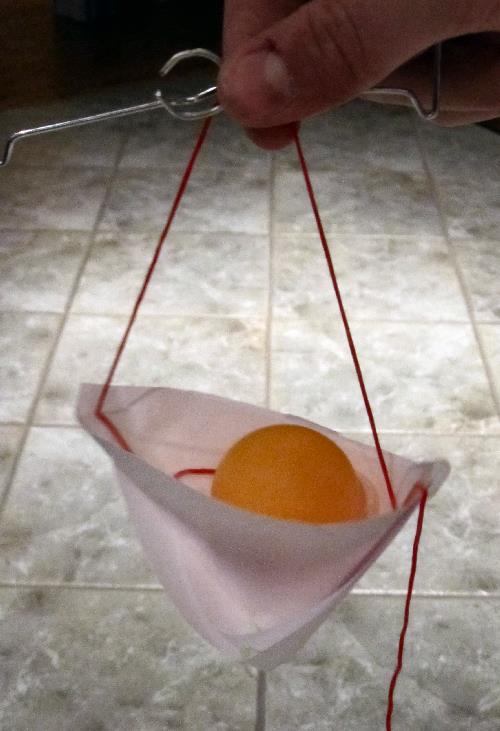
Testing Materials & Process
Materials
- Student desks, small tables or chairs
- Duct tape or other strong tape
Process
Teams test their designs by attaching the bottom of their chair lift to the “valley” (floor, chair, desk or small table). Then, attaching the top of the chair lift to the “mountain” (chair, desk or small table).
Be sure there is an incline between the bottom and the top.Real World Applications
Learn how the seats are heated on Okemo Mountain Resort’s Sunburst Six orange-tinted bubble chair lift in central Vermont. (Video 2:59)
Source: NJ.com YouTube Channel
On this tour, you’ll learn the basic principles of what makes the Drive Terminal of the Duncan Express (Doppelmayr Quad Detachable Chair lift) work. (Video 5:28)
Source: SlopeEdge YouTube ChannelEngineering Design Challenge
Design Challenge
You’re a team of engineers given the challenge of designing and building a chair lift out of everyday materials. The chair lift must carry a ping pong ball up a rope/wire line from the valley to the mountain and back down from the mountain to the valley without the ball falling out of the chair.
Criteria
- Chair lift must carry the ball up a rope/wire line and back down without the ball falling out of the chair.
Constraints
- Can use only the materials provided.
- Unused materials may be shared with other teams or materials may be traded.
Activity Instructions & Procedures
- Break class into teams of 2-4.
- Hand out the Build a Chair Lift worksheet, as well as some sheets of paper for sketching designs.
- Discuss the topics in the Background Concepts Section.
- Review the Engineering Design Process, Design Challenge, Criteria, Constraints and Materials. If time allows, review “Real World Applications” prior to conducting the design challenge.
- Before instructing students to start brainstorming and sketching their designs, ask them to consider the following:
– How an aerial chair lift works
– Weight your chair lift must carry
– Safety features - Provide each team with their materials.
- Explain that students must develop a chair lift from everyday items. The chair lift must carry a ping pong ball up a rope/wire line from the valley to the mountain and back down from the mountain to the valley without the ball falling out of the chair.
- Announce the amount of time they have to design and build (1 hour recommended).
- Use a timer or an on-line stopwatch (count down feature) to ensure you keep on time. (www.online-stopwatch.com/full-screen-stopwatch). Give students regular “time checks” so they stay on task. If they are struggling, ask questions that will lead them to a solution quicker.
- Students meet and develop a plan for their chair lift. They agree on materials they will need, write/draw their plan, and present their plan to the class. Teams may trade unlimited materials with other teams to develop their ideal parts list.
- Teams build their designs.
- Test the chair lift designs by attaching the bottom of their chair lift to the “valley” (floor, chair, desk or small table). Then, attaching the top of the chair lift to the “mountain” (chair, desk or small table).
Be sure there is an incline between the bottom and the top. - As a class, discuss the student reflection questions.
- For more content on the topic, see the “Real World Applications” and “Digging Deeper” sections.
Variations
- Design a chair to transport a golf ball up and down the lift. Then, try a tennis ball…a baseball…
- Design a chair lift that has two seats (carrying two balls up and down)
- Try having one seat going up while another is going down
Student Reflection (engineering notebook)
- How similar was your original design to the actual chair lift your team built?
- If you found you needed to make changes during the construction phase, describe why your team decided to make revisions.
- Was your chairlift able to carry the ping pong ball up and down the mountain without it falling out of the chair you designed?
- Which chairlift system that another team developed was the most effective or interesting to you? Why?
- Do you think that this activity was more rewarding to do as a team, or would you have preferred to work alone on it? Why?
- If you could have used one additional material (tape, glue, wood sticks, foil — as examples) which would you choose and why?
Time Modification
The lesson can be done in as little as 1 class period for older students. However, to help students from feeling rushed and to ensure student success (especially for younger students), split the lesson into two periods giving students more time to brainstorm, test ideas and finalize their design. Conduct the testing and debrief in the next class period.
Engineering Design Process
Background Concepts
What is a Chair Lift?
An elevated passenger ropeway, or chairlift, is a type of aerial lift, which consists of a continuously circulating steel cable loop strung between two end terminals and usually over intermediate towers, carrying a series of chairs. They are used extensively at ski areas, but are also found at amusement parks as well. Depending on carrier size and loading efficiency, a passenger ropeway can move up 4000 people per hour, and the swiftest lifts achieve operating speeds of up to 12 m/s (26.8 mph; 43.2 km/h).
Aerial Lifts
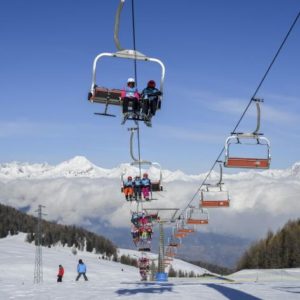
AlexRotenberg-bigstock.com
An aerial lift is an increasingly popular means of transportation in which cabins, cars, gondolas or open chairs are hauled above the ground by means of one or more cables. These are becoming popular in urban environments where ground space is at a premium. Over 600 years ago aerial systems were used in China to help move people and goods over streams. During the 1800’s, the technology was improved by the mining industry to assist in the transport of minerals over difficult terrain. Aerial lifts are being installed in some cities to assist with urban transportation.
Safety is always a concern on chair lifts, which is why engineers have incorporated many safety features into them including lift bars (which provides the passenger with a horizontal bar to hold onto), and locking devices so the cable cannot move backwards.
The mechanism at the top of a chairlift allows for the steel rope to wind horizontally, returning empty chairs down a mountain.
Vocabulary
- Aerial Lift
Means of transportation in which cabins, cars, gondolas or open chairs are hauled above the ground by means of one or more cables. - Cable
A thick rope of wire or nonmetallic fiber, typically used for aerial lifts. - Constraints
Limitations with material, time, size of team, etc. - Criteria
Conditions that the design must satisfy like its overall size, etc. - Chair Lift
A type of elevated passenger aerial lift, which consists of a continuously circulating steel cable loop strung between two end terminals and usually over intermediate towers, carrying a series of chairs. - Engineers
Inventors and problem-solvers of the world. Twenty-five major specialties are recognized in engineering (see infographic). - Engineering Design Process
Process engineers use to solve problems. - Engineering Habits of Mind (EHM)
Six unique ways that engineers think. - Iteration
Test & redesign is one iteration. Repeat (multiple iterations). - Loading Efficiency
How quickly and safely a chair lift loads riders. - Prototype
A working model of the solution to be tested. - Safety Features
Engineers incorporate many safety features into a chair lift (lift bars, locking devices, etc.)
- Aerial Lift
Dig Deeper
Internet Connections
Writing Activity
Write an essay or a paragraph about an environment or location where you think an aerial lifts could help lessen ground traffic congestion.
Curriculum Alignment
Alignment to Curriculum Frameworks
Note: Lesson plans in this series are aligned to one or more of the following sets of standards:
- U.S. Science Education Standards (http://www.nap.edu/catalog.php?record_id=4962)
- U.S. Next Generation Science Standards (http://www.nextgenscience.org/)
- International Technology Education Association’s Standards for Technological Literacy (http://www.iteea.org/TAA/PDFs/xstnd.pdf)
- U.S. National Council of Teachers of Mathematics’ Principles and Standards for School Mathematics (http://www.nctm.org/standards/content.aspx?id=16909)
- U.S. Common Core State Standards for Mathematics (http://www.corestandards.org/Math)
- Computer Science Teachers Association K-12 Computer Science Standards (http://csta.acm.org/Curriculum/sub/K12Standards.html)
National Science Education Standards Grades K-4 (ages 4-9)
CONTENT STANDARD A: Science as Inquiry
As a result of activities, all students should develop
- Abilities necessary to do scientific inquiry
CONTENT STANDARD B: Physical Science
As a result of the activities, all students should develop an understanding of
- Properties of objects and materials
- Position and motion of objects
CONTENT STANDARD E: Science and Technology
As a result of activities, all students should develop
- Abilities of technological design
- Understanding about science and technology
CONTENT STANDARD F: Science in Personal and Social Perspectives
As a result of activities, all students should develop understanding of
- Changes in environments
- Science and technology in local challenges
CONTENT STANDARD G: History and Nature of Science
As a result of activities, all students should develop understanding of
- Science as a human endeavor
National Science Education Standards Grades 5-8 (ages 10-14)
CONTENT STANDARD A: Science as Inquiry
As a result of activities, all students should develop
- Abilities necessary to do scientific inquiry
CONTENT STANDARD B: Physical Science
As a result of their activities, all students should develop an understanding of
- Motions and forces
- Transfer of energy
CONTENT STANDARD E: Science and Technology
As a result of activities in grades 5-8, all students should develop- Abilities of technological design
- Understandings about science and technology
- Science and technology in society
National Science Education Standards Grades 5-8 (ages 10-14)
CONTENT STANDARD F: Science in Personal and Social Perspectives
As a result of activities, all students should develop understanding of
- Populations, resources, and environments
- Risks and benefits
CONTENT STANDARD G: History and Nature of Science
As a result of activities, all students should develop understanding of
- History of science
National Science Education Standards Grades 9-12 (ages 14-18)
CONTENT STANDARD A: Science as Inquiry
As a result of activities, all students should develop
- Abilities necessary to do scientific inquiry
CONTENT STANDARD B: Physical Science
As a result of their activities, all students should develop understanding of
- Motions and forces
CONTENT STANDARD E: Science and Technology
As a result of activities, all students should develop
- Abilities of technological design
- Understandings about science and technology
CONTENT STANDARD F: Science in Personal and Social Perspectives
As a result of activities, all students should develop understanding of
- Science and technology in local, national, and global challenges
CONTENT STANDARD G: History and Nature of Science
As a result of activities, all students should develop understanding of
- Historical perspectives
Next Generation Science Standards Grades 3-5 (Ages 8-11)
Motion and Stability: Forces and Interactions
Students who demonstrate understanding can:
- 3-PS2-1. Plan and conduct an investigation to provide evidence of the effects of balanced and unbalanced forces on the motion of an object.
Energy – Students who demonstrate understanding can:
- 4-PS3-1. Use evidence to construct an explanation relating the speed of an object to the energy of that object.
Engineering Design
Students who demonstrate understanding can:
- 3-5-ETS1-1.Define a simple design problem reflecting a need or a want that includes specified criteria for success and constraints on materials, time, or cost.
- 3-5-ETS1-2.Generate and compare multiple possible solutions to a problem based on how well each is likely to meet the criteria and constraints of the problem.
- 3-5-ETS1-3.Plan and carry out fair tests in which variables are controlled and failure points are considered to identify aspects of a model or prototype that can be improved.
Next Generation Science Standards Grades 6-8 (Ages 11-14)
Engineering Design
Students who demonstrate understanding can:
- MS-ETS1-2 Evaluate competing design solutions using a systematic process to determine how well they meet the criteria and constraints of the problem.
Standards for Technological Literacy – All Ages
The Nature of Technology
- Standard 1: Students will develop an understanding of the characteristics and scope of technology.
- Standard 2: Students will develop an understanding of the core concepts of technology.
Technology and Society
- Standard 4: Students will develop an understanding of the cultural, social, economic, and political effects of technology.
- Standard 5: Students will develop an understanding of the effects of technology on the environment.
- Standard 6: Students will develop an understanding of the role of society in the development and use of technology.
- Standard 7: Students will develop an understanding of the influence of technology on history.
Design
- Standard 8: Students will develop an understanding of the attributes of design.
- Standard 9: Students will develop an understanding of engineering design.
- Standard 10: Students will develop an understanding of the role of troubleshooting, research and development, invention and innovation, and experimentation in problem solving.
Abilities for a Technological World
- Standard 11: Students will develop abilities to apply the design process.
- Standard 13: Students will develop abilities to assess the impact of products and systems.
The Designed World
- Standard 18: Students will develop an understanding of and be able to select and use transportation technologies.
Related Engineering Fields and Degrees
Student Worksheet
Build a Chair Lift
Research and Planning
You are part of a team of engineers who have been given the challenge of building a chair lift to carry a ping pong ball up the mountain (from the floor of your classroom to the top of a desk or chair) using materials provided to you. Your lift must both carry the ball up the mountain and also back down without the ball dropping out. How you design your chairlift and the chair that will carry the ball, and what materials you use are up to you!
Design Phase
You have been provided with many materials from which to design and build your own chairlift and chair. Consider which materials you would like to use, and list them in the box below. On a separate piece of paper, draw a diagram of the system you intend to build.
Parts Required: Build it! Test it!
Next build your chairlift and test it. You may share unused building materials with other teams — and trade materials too. Be sure to watch what other teams are doing and consider the aspects of different designs that might be an improvement on your team’s plan.You may decide to completely change your design when in the manufacturing phase — and you may ask for additional materials, or try different solutions as you build.
Reflection
Complete the reflection questions below:
1) How similar was your original design to the actual chair lift your team built?
2) If you found you needed to make changes during the construction phase, describe why your team decided to make revisions.
3) Was your chairlift able to carry the ping pong ball up and down the mountain without it falling out of the chair you designed?
4) Which chairlift system that another team developed was the most effective or interesting to you? Why?
5) Do you think that this activity was more rewarding to do as a team, or would you have preferred to work alone on it? Why?
6) If you could have used one additional material (tape, glue, wood sticks, foil — as examples) which would you choose and why?
Translations



